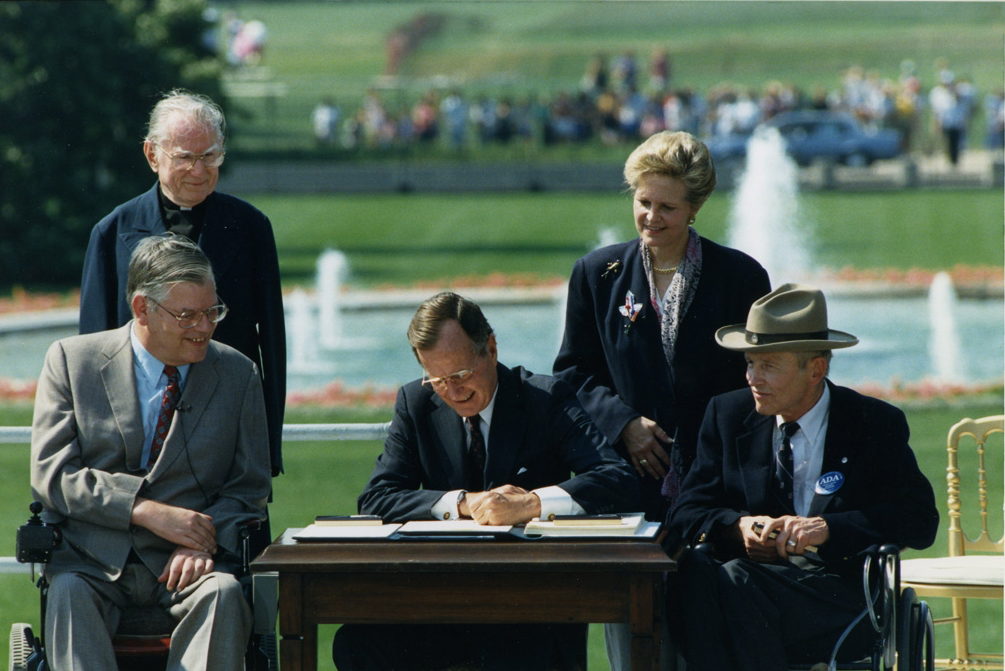The Americans with Disabilities Act
On July 26, 1990, President George Herbert Walker Bush signed the Americans with Disabilities Act (ADA) into law. The ADA is one of America's most comprehensive pieces of civil rights legislation. It prohibits discrimination and guarantees that people with disabilities have the same opportunities as everyone else to participate in the mainstream of American life, to enjoy employment opportunities, to purchase goods and services, and to participate in State and local government programs and services. The ADA incorporates many regulations but our focus in this section is on service animals. Just as service dog teams have the right to public access with their task-trained service dogs all people have the right to be in public without being harassed or encumbered by dogs that are not trained for public access. (Fake Service Dogs)
This 7-minute video is about the day the ADA, was signed. Although the video is a little long it is worth your time to hear from those who are most affected by this law.
Listen to the Audio File
A Text Description of the video.
There are growing numbers of people with both obvious and hidden disabilities that use a service dog to help them be more independent and provide fuller access by mitigating a disability. These highly trained dogs perform important tasks to assist people with disabilities. Some tasks include:
- Balance work, providing stability for a person who has difficulty walking,
- Mobility work such as picking up items for a person who uses a wheelchair,
- Guide Dog work such as guiding a person with limited or no vision
- Tethering by preventing a child with autism from wandering away, or
- Alerting a person who has hearing loss when someone is approaching from behind.
- Seizure Work
- Behavior Disruption for individuals that may have self-abusive or highly anxious behaviors that can be mitigated with help of a service animal.
The ADA requires State and local government agencies, businesses, and non-profit organizations (any covered entity) providing goods or services to the public to make "reasonable modifications" in their pet policies, practices, or procedures when necessary to accommodate people with disabilities using a service dog. What this means is that a service dog team is allowed in places where normally no pets are allowed. Those hotels, motels, parks and businesses that have a no pets policy generally must modify their policies to allow service animals into their facilities.
Remember service dogs are not pets, they are considered durable medical equipment. Asking someone with a service dog to exclude them from a business is the same as asking someone with crutches, a walker or a wheelchair to leave their equipment outside before coming into the place of business or public accommodation.
Service Dog Etiquette: Key Points to Remember
- Allow the dog to concentrate and perform for the safety of his handler. Don’t distract any working dog (talking to, feeding, calling or making noises to attract it) while the dog is working or you are invited to interact. Many working dogs wear a harness or vest but some do not. You should allow the dog to concentrate and perform for the safety of his handler. .
- Speak to the handler, not the dog. Some handlers will allow petting, but be sure to ask before doing so.
- If the handler says no when you ask to pet the dog, don’t be offended. The dog (or handler) might be having a bad day, or he might be in a hurry. Remember, a service dog is as vital to a disabled person as a wheelchair or cane.
- Service dog teams have the right of way
- Do not EVER ask about a person’s disability.
